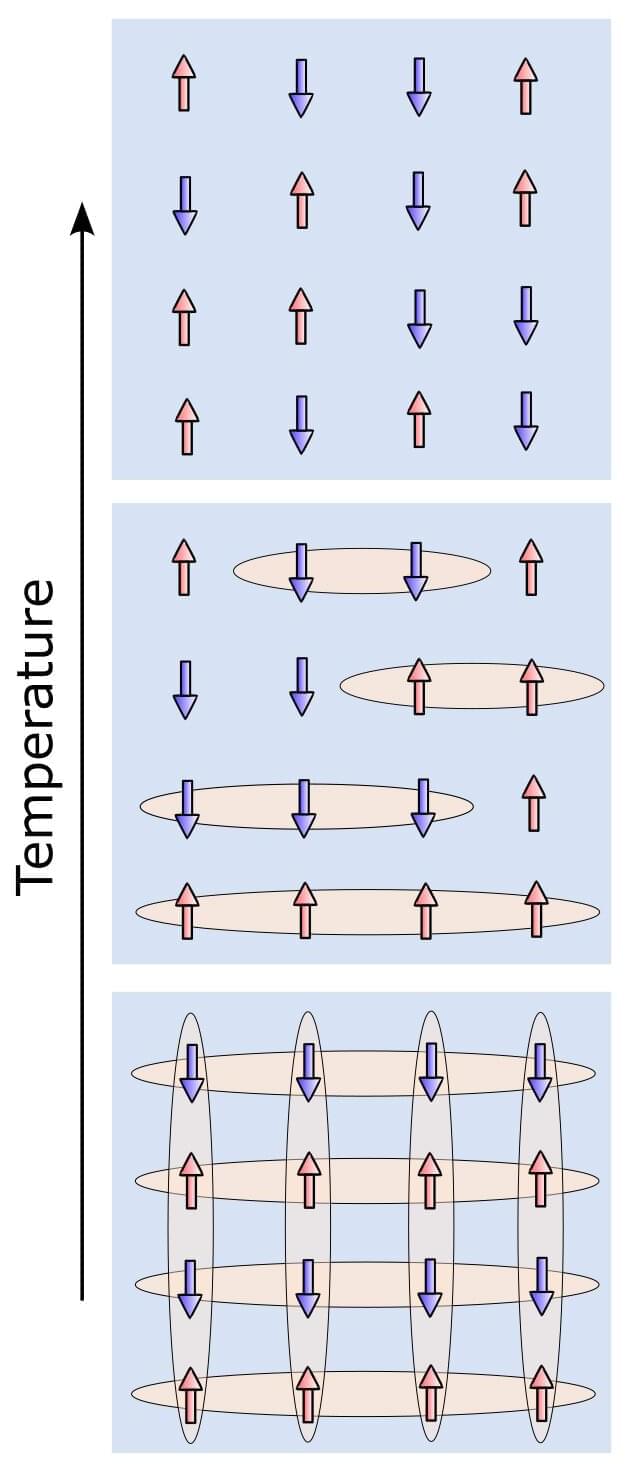Physicists have discovered “stacked pancakes of liquid magnetism” that may account for the strange electronic behavior of some layered helical magnets.
The materials in the study are magnetic at cold temperatures and become nonmagnetic as they thaw. Experimental physicist Makariy Tanatar of Ames National Laboratory at Iowa State University noticed perplexing electronic behavior in layered helimagnetic crystals and brought the mystery to the attention of Rice theoretical physicist Andriy Nevidomskyy, who worked with Tanatar and former Rice graduate student Matthew Butcher to create a computational model that simulated the quantum states of atoms and electrons in the layered materials.
Magnetic materials undergo a “thawing” transition as they warm up and become nonmagnetic. The researchers ran thousands of Monte Carlo computer simulations of this transition in helimagnets and observed how the magnetic dipoles of atoms inside the material arranged themselves during the thaw. Their results were published in a recent study in Physical Review Letters.









Comments are closed.